by hankinslawrenceimages | Nov 5, 2009 | Flowers
Not long ago, I discovered a couple of types of Toad Lilies at Green Spring Gardens. About a week later, I was photographing at Lewis Ginter Botanical Garden in Richmond and found another variety of toad lily – the Thojen Toad Lily (tricyrtis).
Like the other toad lilies I’ve photographed – the structure of the flowers of the Thojen Toad Lily is incredible. Here’s a close up view of one of the blossoms to give you a sense of amazing structure.

(c) 2009 Patty Hankins
And here are a couple of photographs of a cluster of Thojen Toad Liles growing along a stem.

(c) 2009 Patty Hankins

(c) 2009 Patty Hankins
I found the Thojen Toad Lilies along the Woodland Walk in early October. There were several of the toad lilies growing in the area. So if you’re at Lewis Ginter Botanical Garden in the early fall – be sure to keep an eye out for the Thojen Toad Lileis.
by hankinslawrenceimages | Nov 2, 2009 | Flowers, Wildflowers
Last week, I spent a morning photographing at Eastern Neck National Wildlife Refuge outside of Rock Hall, Maryland. I wasn’t sure what to expect at this time of year. I ended up having a wonderful time – photographing some colorful leaves and several flowers. One of the wildflowers I photographed was Queen Anne’s Lace (Daucus carota). I’ve been wanting to photograph Queen Anne’s Lace for a while – just hadn’t found the right plant in the right light. On Friday morning, I found it.
I only spotted this one Queen Anne’s Lace plant still flowering along the Bayview-Butterfly Trail. But it was in a perfect location, on an overcast day. So I spent about 30 minutes photographing the plant from different angles.
My first photos were from above – a typical angle for photographing Queen Anne’s Lace.
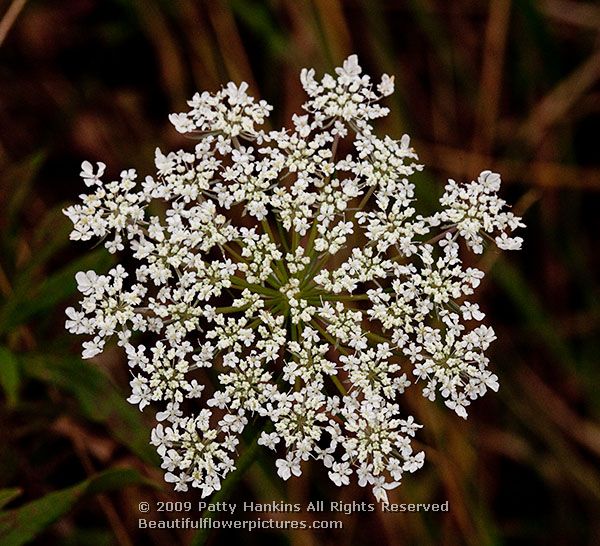
(c) 2009 Patty Hankins
As I was photographing it from above, I noticed just how detailed and intricate the flower of the Queen Anne’s Lace really is. So I decided to try a few closer in photos – from a few different angles. I’m really happy with some of the photos I took – they really show the intricate beauty of the Queen Anne’s Lace.
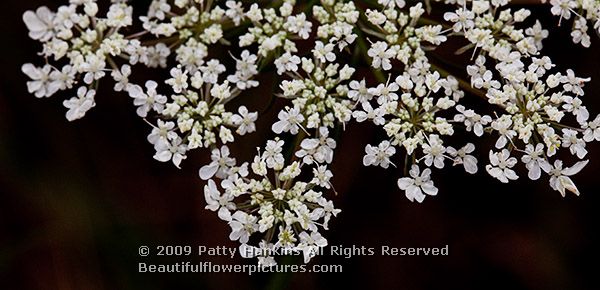
(c) 2009 Patty Hankins
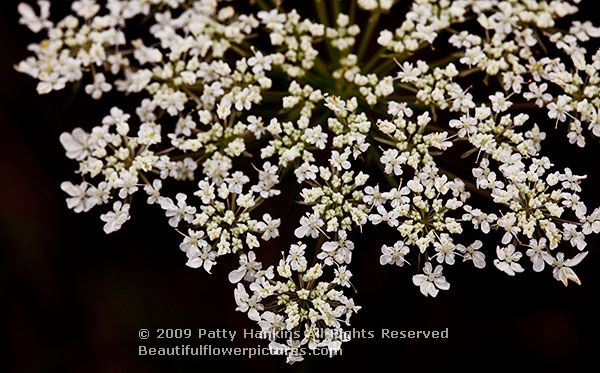
(c) 2009 Patty Hankins
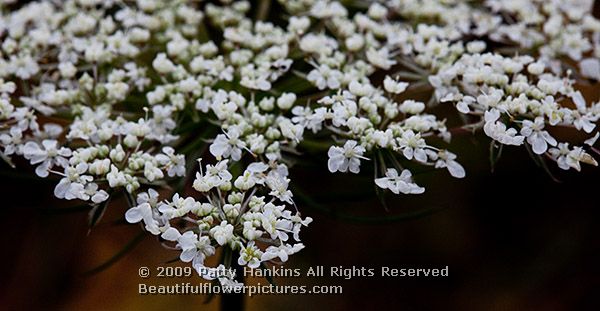
(c) 2009 Patty Hankins
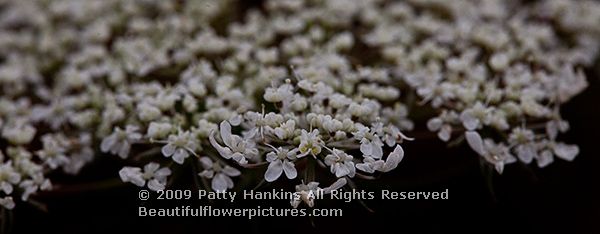
(c) 2009 Patty Hankins
Now that I’ve taken a closer look at Queen Anne’s Lace – I’ll definitely be looking for more of it photograph next year.
by hankinslawrenceimages | Oct 31, 2009 | Photo Locations
In addition to the Cornucopia displayp, and all the wonderful carved pumpkins, I also photographed several other groups of pumpkins on a recent trip to Longwood Gardens. Located throughout the gardens, each display contained multiple varieties of pumpkins, squashes and gourdes of every imaginable shape and size.
This grouping was located near the rose garden. I don’t know about you – but I’d love to know just how much the pumpkin on the right weighs.

(c) 2009 Patty Hankins
Here’s a detailed photo of some of pumpkins in this display. I liked the combination of the orange pumpkin, the yellow chrysanthemums and the hay.
 (c) 2009 Patty Hankins
(c) 2009 Patty Hankins
Here are a few of the pumpkins on display near the Idea Garden.
 (c) 2009 Patty Hankins
(c) 2009 Patty Hankins
A group of pumpkins piled up against the bales of hay in the Children’s Garden.
 (c) 2009 Patty Hankins
(c) 2009 Patty Hankins
And finally, some from a display near the Conservatory. I really liked the contrast in colors between the two similarly shaped pumpkins.
 (c) 2009 Patty Hankins
(c) 2009 Patty Hankins
I really enjoyed photographing the pumpkin displays a t Longwood Gardens this year – and can’t wait to see what they come up with next year. 🙂
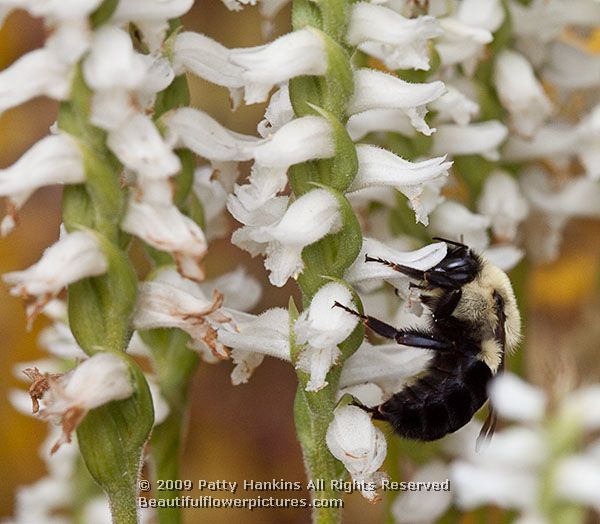
by hankinslawrenceimages | Oct 28, 2009 | Flowers, Orchidaceae Family, Wildflowers
While exploring the Conservatory at Longwood Gardens on a recent visit, I was amazed to come across some Fragrant Ladies’ Tresses (Spiranthes odorata) growing beneath the ferns. Ladies’ Tresses are a native orchid, which I’ve never seen growing indoors. They are a fall blooming orchid – that can grow from Eastern Canada and south along the East Coast of the US.
This first photo – taken in the Longwood Conservatory – shows the plants with some blossoms flowering, and some not yet open. It gives a nice view of the structure of the plant.
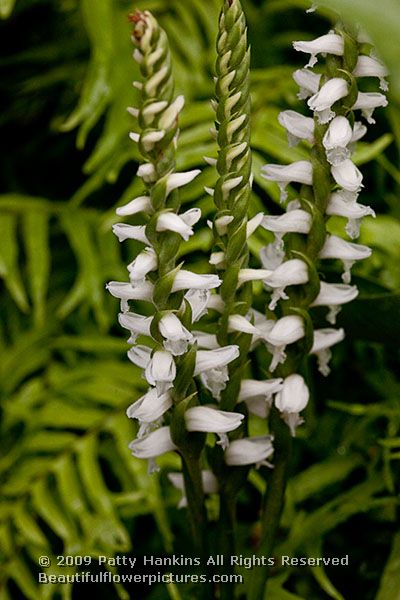 (c) 2009 Patty Hankins
(c) 2009 Patty Hankins
Later the same day, as I was photographing some of the leaves in Pierce’s Woods at Longwood Gardens, I spotted a few Fragrant Ladies’ Tresses growing under some trees and along the stream. As I looked more closely – I discovered there were several groups and even a few large patches of the native orchids growing in the same area. Here are some of my favorite photos of the Fragrant Ladies’ Tresses.
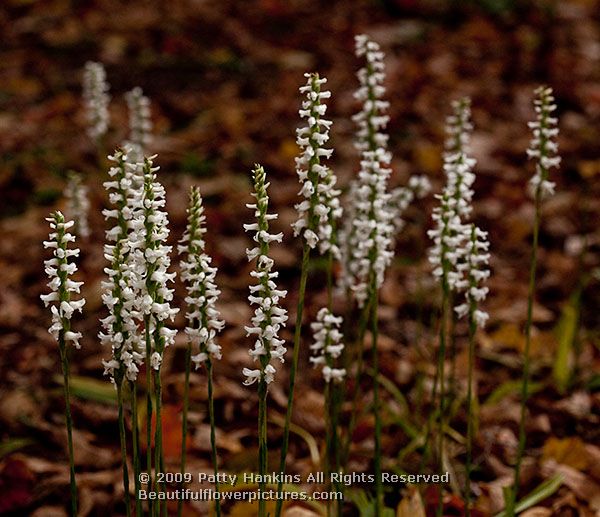
(c) 2009 Patty Hankins
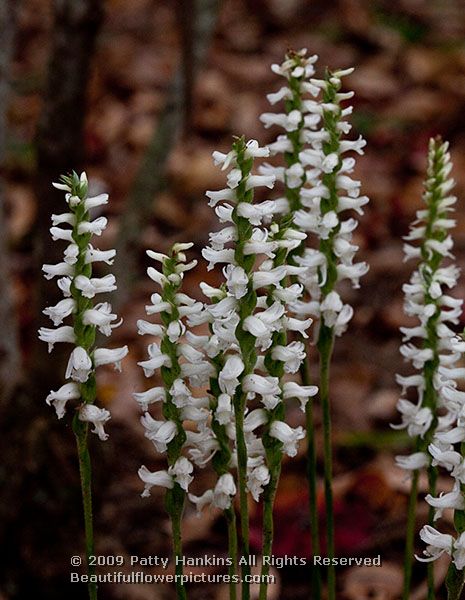
(c) 2009 Patty Hankins
A few closeup photos showing details of the plants
Two stalks with a full set of blossoms
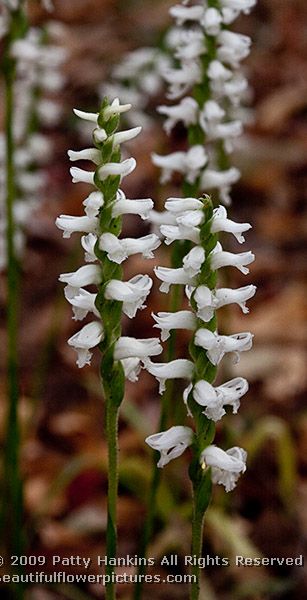
(c) 2009 Patty Hankins
One of the blossoms
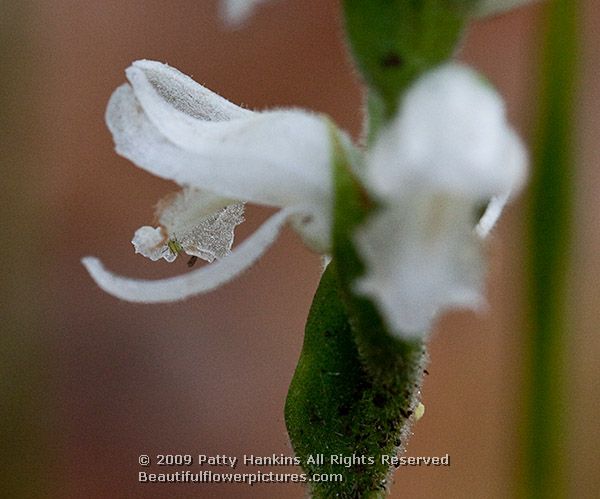
(c) 2009 Patty Hankins
View from above showing the spiral stalk and flower pattern
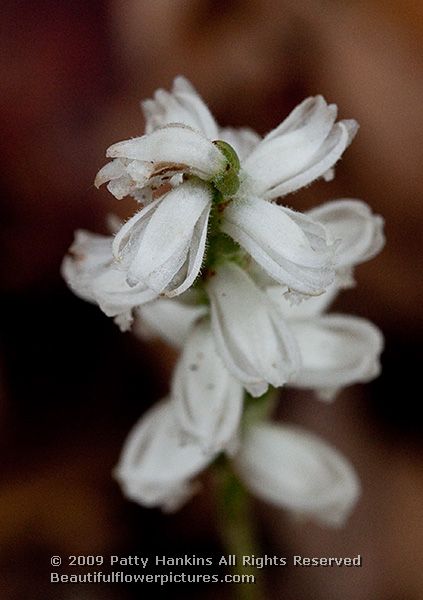
(c) 2009 Patty Hankins
As I was photographing one last set of Ladies’ Tresses, a large bee flew over and started exploring the plants. One of the Longwood’s educational themes this year has been pollinators – this bee certainly was paying attention and was busy polinating the flowers while searching for nectar.

(c) 2009 Patty Hankins
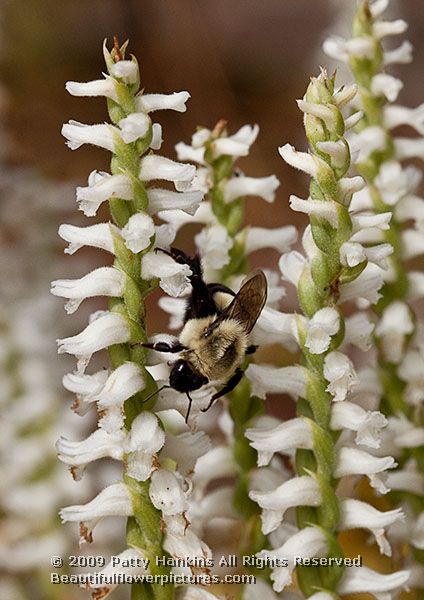
(c) 2009 Patty Hankins
Finding and photographing the Fragrant Ladies’ Tresses was definitely one of the highlights of my visit to Longwood Gardens. Now that I know what they look like, and where they’re likely to be growing, I’ll keep my eye out for more of these wonderful native orchids.
by hankinslawrenceimages | Oct 21, 2009 | Flowers, Solanaceae Family
One of the things I discovered while I was photographing the pepper collection at the National Arboretum was the wonderful variety of shapes and colors of peppers there are. Some of the most striking ones were either red or green.
The first set I photographed were just labeled Capiscum Pepper without any info about the specific variety. I really like the dark green of the peppers contrasting with the light green of the leaves.
 (c) 2009 Patty Hankins
(c) 2009 Patty Hankins
 (c) 2009 Patty Hankins
(c) 2009 Patty Hankins
The Bishop’s Cap Peppers have an amazing shape. They were a challenge to photograph – I wanted to show the shape while controlling the shine of the pepper skin.
 (c) 2009 Patty Hankins
(c) 2009 Patty Hankins
 (c) 2009 Patty Hankins
(c) 2009 Patty Hankins
And finally the Fish Peppers – they start out as a striped pepper in shades of green – and turn to red as they ripen.
 (c) 2009 Patty Hankins
(c) 2009 Patty Hankins
 Fish Peppers (c) 2009 Patty Hankins
Fish Peppers (c) 2009 Patty Hankins
I’ll be posting the last few pepper photos from this year in a few days. It’s been great fun photographing them – and I’m looking forward to discovering more varieties next year.









 (c) 2009 Patty Hankins
(c) 2009 Patty Hankins (c) 2009 Patty Hankins
(c) 2009 Patty Hankins (c) 2009 Patty Hankins
(c) 2009 Patty Hankins (c) 2009 Patty Hankins
(c) 2009 Patty Hankins
 (c) 2009 Patty Hankins
(c) 2009 Patty Hankins






 (c) 2009 Patty Hankins
(c) 2009 Patty Hankins (c) 2009 Patty Hankins
(c) 2009 Patty Hankins (c) 2009 Patty Hankins
(c) 2009 Patty Hankins (c) 2009 Patty Hankins
(c) 2009 Patty Hankins (c) 2009 Patty Hankins
(c) 2009 Patty Hankins